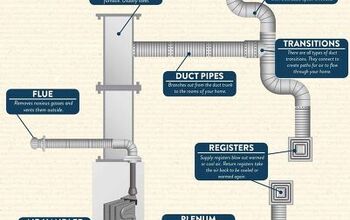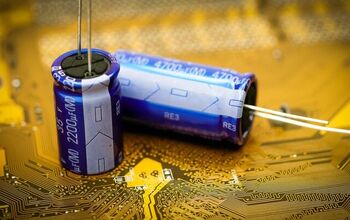What Can Be Used To Dissolve Silicone Caulking?

It isn’t always effective to simply scrape away silicone caulking, and it can leave a mess behind. That is why it is tempting to dissolve it and avoid scraping it entirely. So, what can be used to dissolve silicone caulking?
Use mineral spirits, acetone, isopropyl alcohol, or white vinegar to dissolve silicone caulking. Toulene and xylene are extremely potent but you should only use them as a last resort to dissolve silicone caulking. Methyl ethyl ketone (MEK) is strong enough to dissolve silicone, but you may need to scrape away the remnants.
White vinegar is a great option if you are in a pinch, but it isn’t as strong as powerful chemicals like acetone. Always protect your skin, mouth, and eyes when you dissolve silicone caulking. Follow along as we explore what can be used to dissolve silicone caulking.
Related Content: Does WD40 Remove Silicone Sealant? | How To Remove Silicone Caulk From Fiberglass Shower Stall | Polyseamseal vs. Silicone
Do You Need Handyman Services?
Get free, zero-commitment quotes from pro contractors near you.

Why Is It Hard To Remove Silicone Caulking?
Silicone caulking is made by mixing two primary elements, silicon, and oxygen. When they combine, they create a substance called siloxane polymer. They bond with other elements, such as carbon and hydrogen.
They can bond with other chemicals, which gives silicone caulking multiple forms, such as solid and liquid. Once the chemicals bond together, they can’t be unbonded unless other chemicals are applied. This is what makes silicone caulking so durable.
The only way to get silicone caulking to unbind is to apply a solvent. A solvent will break the solute into atoms and will disperse. Using a solvent is the only way to get silicone caulking off your sink.
What Can be Used to Dissolve Silicone Caulking?
You can dissolve silicone caulking with chemicals such as isopropyl alcohol and mineral spirits. It is important to exercise caution anytime that you dissolve silicone caulking with chemicals. These chemicals are caustic and can injure your eyes, skin, mouth, or lungs upon contact.
Let’s take a look at you can safely dissolve silicone caulk with common chemicals.
How to Dissolve Silicone Caulk
Mineral Spirits
Unlike other solvents, mineral spirits work best on particular surfaces. Only use mineral spirits on hard surfaces such as concrete and marble. You can find mineral spirits are most home goods stores, and you can usually find them at paint stores if nothing else. Apply mineral spirits with a spray bottle for the best results.
Mineral spirits are sold at your local home goods store. If you don’t have The Home Depot or Lowe’s in your area, you can also find it at a paint store. Just be sure to purchase a spray bottle for easy application.
Isopropyl Alcohol
Other over the counter use is known to help clean and disinfect objects. Isopropyl works well on silicone caulking, but only on plastic or painted surfaces. Industrial grade isopropyl or also known as technical grade isopropyl alcohol, is strong enough to remove caulking.
The higher purity industrial-grade isopropyl alcohol is 99%, and that is nearly 30% stronger than standard rubbing alcohol. You can use store-bought 70% rubbing alcohol to remove caulking, but you’ll need to use much more of it than you would with a high-purity bottle.
Toluene & Xylene
You can find toluene and xylene in industrial-grade cleaners because of how powerful they are. Toulene and xylene can easily dissolve silicone caulking, but it’s important to exercise caution. Both chemicals can damage your skin and can be deadly if you breathe them in for too long.
Only use toluene and xylene if you don’t have any other options. It’s a highly aggressive solvent that can harm many surfaces. Never apply toluene and xylene to plastic surfaces or surfaces with paint on them.
White Vinegar
White vinegar is the best household item that you can use to dissolve silicone caulking. It may not be as strong as isopropyl alcohol or mineral spirits, but it is readily available and effective. You can brush white vinegar onto silicone caulking, let it sit, and watch it dissolve.
However, you may need to apply the white vinegar to the silicone caulking multiple times before you can dissolve the silicone. This is a great option because there is less of a health risk and white vinegar is inexpensive. You will likely need to scrape some of the silicone caulking away, but the white vinegar will weaken it enough to make it easy.
Acetone
Acetone is a colorless liquid that is known as Propanone. It’s a solvent that’s typically used to remove nail polish. Acetone is also a standard paint remover.
The substance isn’t as aggressive as other solvents on our list. However, it can end up damaging some surfaces. It’s suitable for removing small amounts of silicone caulking.
Methyl Ethyl Ketone (MEK)
MEK is a highly aggressive liquid solvent used in a variety of applications and is similar to WD-40. It’s found in adhesives, printing inks, and dewaxing agents. However, it is also widely used as an extraction medium for waxes, resins, oils, and fats.
Only reach for MEK if it’s your last option. The solvent can damage plastics, paints, and other surfaces. Before applying, always do a test patch.
Unlike other solvents, you only want MEK sitting on a surface for a short while. If it sits for too long, it could strip off and break down the surface you’re working on.
If you have a can of WD-40 lying around, you can also feel free to use that! Read up the use of WD-40 here: Does WD 40 Remove Silicone Sealant?
Remove Silicone Caulk With Scrappers
Using chemicals can potentially damage surfaces and be harmful to pets, children, and people living in the vicinity. To avoid using chemicals, you can also remove silicone caulk using a scrapper. Scrappers are cost-efficient, easy to use, and can easily remove caulk without much hassle.
Ask any professional, and they will tell you that using a digestant isn’t necessary. Painters and other experts usually use a scraper to remove the silicone caulk. They use an extremely sharp scraper to help get off the residue and scrape away excess debris.
However, if the silicone caulking is heavily caked onto an object’s surface, it could be challenging to remove. While you can remove it bit by bit with a scraper, it’s only recommended if it’s not on a scratchable surface. Learn how to remove silicone caulk from fiberglass.
Do You Need Handyman Services?
Get free, zero-commitment quotes from pro contractors near you.

Related Questions
What Is the Best Silicone Caulk Remover?
If we’re talking over the counter silicone caulk remover, popular brands are Goo Gone, DAP Caulk-Be-Gone, or Goo Off. However, you must pay attention to what type of surfaces each solvent can be used on.Typically, the company will list this on the back of the bottle. So, before you go and grab the first silicone caulk remover, read the instructions. You want to make sure that the solvent is compatible with the material you put it on.
How to clean up silicone caulk residue?
Luckily, removing silicone caulk residue takes a few steps. First, you’ll want to use a caulk scraper to get as much residue off. After that, apply either mineral spirits or isopropyl alcohol. After that, wipe down with a towel and repeat as many times as necessary.
Are there any methods to remove silicone caulk without chemicals?
You can remove silicone caulk with a scraper and a hairdryer. The heat of the hairdryer will make the silicone caulk more pliable and easy to scrape off. A hairdryer is an excellent alternative if you don’t want to damage the surface.
How to remove silicone caulk from tile?
To remove silicone caulk from the tile, you’ll need to dampen a scouring pad. From there, use a semi abrasive tool with a solvent on it. Use the abrasive tool to scrub over the tile. Repeat this as many times as necessary. Once you’re done, clean away the remaining residue. Although, you’ll want to avoid soaking the tile as it could cause moisture damage.
More Related Guides

We are a team of passionate homeowners, home improvement pros, and DIY enthusiasts who enjoy sharing home improvement, housekeeping, decorating, and more with other homeowners! Whether you're looking for a step-by-step guide on fixing an appliance or the cost of installing a fence, we've here to help.
More by Upgraded Home Team
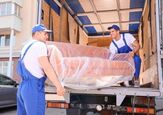





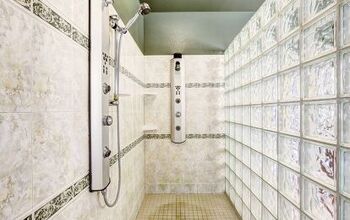
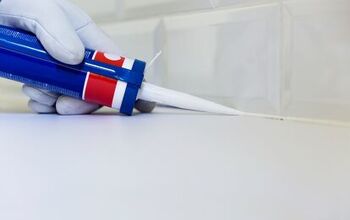
![Finishing Basement Without Permit [Is It Really Illegal?]](https://cdn-fastly.upgradedhome.com/media/2023/07/31/9070078/finishing-basement-without-permit-is-it-really-illegal.jpg?size=350x220)




